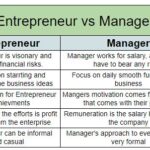How to encourage entrepreneurship in the enterprise
This article is a continuation of our series (part 1, part 2) on entrepreneurship in the enterprise. This specific one deals with HOW to go about doing that. Below is a set of specific recommendation that can help consulting firms looking to make their teams :
:
- contribute to the top line
- take ownership of BUSINESS problems
- increase participation in company strategy and direction
- improve product and organization innovation
Change some basic values
- Entrepreneurship is not necessarily additional risk.
- Entrepreneurs are not money hungry devils,
- They aren’t power hungry
Changing values is not an easy process however by definition, these values serve as the basis of our actions. Addressing these will result in a lot of actions falling in line.
Accept their right to ownership
Most innovators are inherently possessive about their ideas. Make sure that the organization recognizes their ownership in the idea and gives them a fair share in the equity of the idea. You may need to educate them on the basics of equity and the value of, for e.g. Sales, Capital etc when it comes to equity negotiations. The acceptance of individual ownership of the idea/product/segment is critical.
Freedom
Research indicates this being a dominant factor in entrepreneurial behavior. The environment must give them freedom in terms of timing, decisions, spending and ideas. Physical signs of freedom like where you sit and when you work are also high contributors to a sense of freedom. The right to freedom can be earned in exchange to contribution to the company. e.g. some companies have adopted the idea of internal money. internal money can be earned in exchange for $s contributed to in revenue in the last year and can be redeemed against time/resources to peruse ideas.
Give them a sense of control
Entrepreneurs have an internal locus of control. i.e. they believe that what happens to them in the world is in their control (vs. in control of external factors beyond their realm of control). Seek their opinion. Give them a realm of control to make decisions in. Allow them to break organizational rules now and then and go against organizational norm. Don’t bind them to ‘best practices’ or ‘select vendors’ or ‘how things are done’.
Slack
The entrepreneurs agenda won’t always jell with the organization’s however the whole idea is to provide some space in from the organization’s core goals and allow them to venture out. You can define some limits in how outgoing the venture can be and create an environments that keeps it close to home but the organization must fundamentally accept letting go of control here – that’s the whole idea. Google’s one-day-a-week to work on your ideas is a good example of this.
Employment insurance
This is relevant to managers who you would like to turn into entrepreneurs. Managers are usually risk-averse (compared to entrepreneurs) so are looking for ways to reduce their risk. They are generally chasing the standard salary and chases bonuses against extra-ordinary effort/results. From an entrepreneur’s perspective, the salary is an insurance against crashing and burning whereas anything above it is the reward of the risk taken. The two views as very close when it comes to implementation. Terminology makes all the difference and the understanding that you want people to move towards the higher risk/reward end of the spectrum. The company can for example offer a percentage of the revenue as a reward with an an employment insurance earned against earlier contributions.
A culture of tolerance of risk/failure
Managers are trained to reduce risk and the term “risk” generally has a negative connotation for them. While that is true within limits, the culture of the organization must encourage this with the select group identified to be entrepreneurs. They should be taught to evaluate risk and reward better. Limited failure must be encouraged as a lesson learned and shared with others as such. (10 things not to do…)
Encourage Cross-Functional Interaction
Most good ideas come from an interaction of ideas and disciplines. One of the most common issues I see is that organizations are built into silos of P&Ls, Locations, departments and functions. Its not surprising that most product ideas people come up with are totally devoid of a capital/finance or sales and marketing perspective. Encourage frequent interaction between these teams. Make knowledge sharing sessions mandatory, seat them close to each other, make them eat together. Every little thing helps.
Make it easier to learn
Specifically I have seen gaps in
- Equity – its evaluation.
- Basic finance – what are the assets of a consulting firm, how to value and price them etc.
- Sales and Marketing – Basic principles
- Business plans – how to make them, present them to investors (inside or outside the organization)
On innovation
We haven’t really talked about innovation in all this primarily because we feel innovation is a consequence of the above and not an activity that requires independent effort. Essentially an innovation is effectively a smart person, immersed in a problem whole solution is known to have the potential for financial gain.






